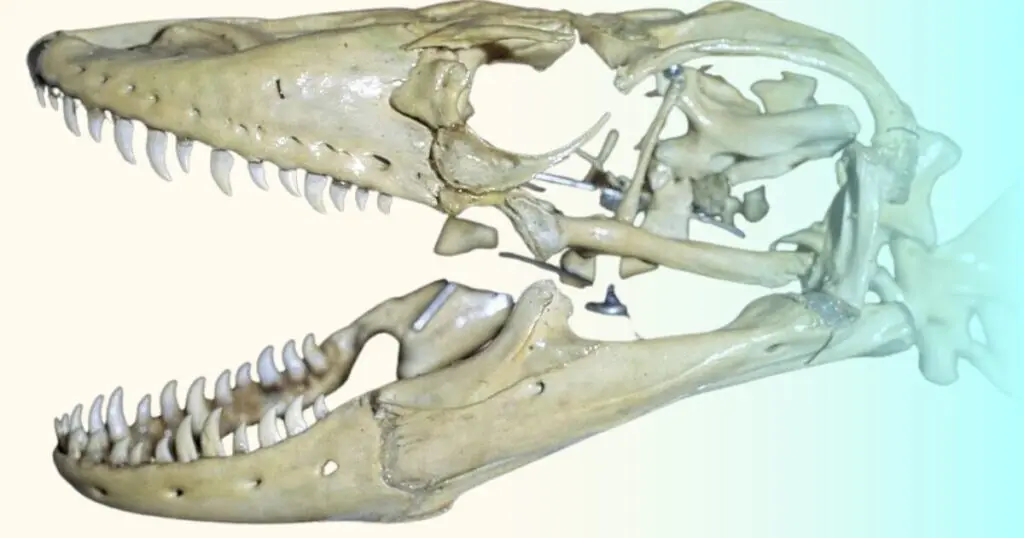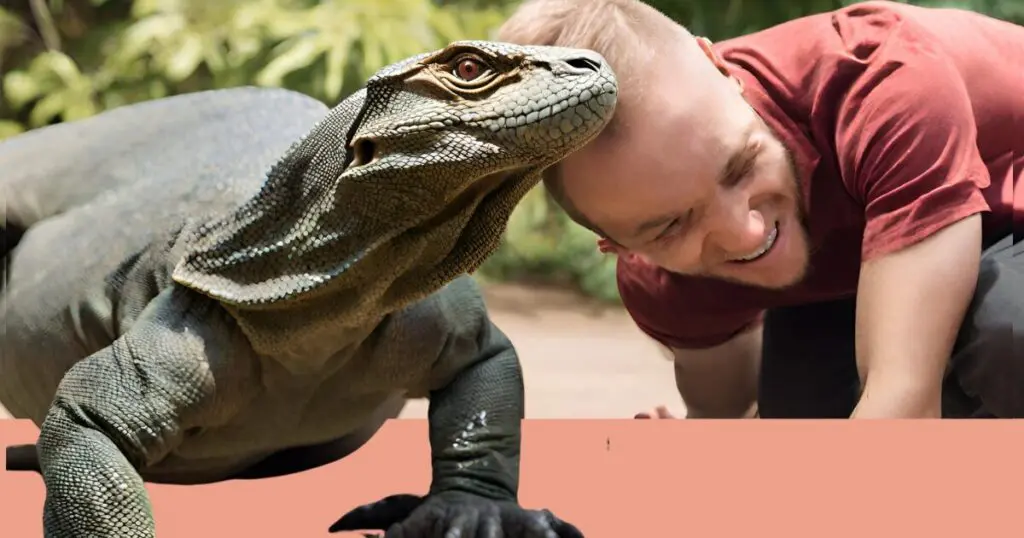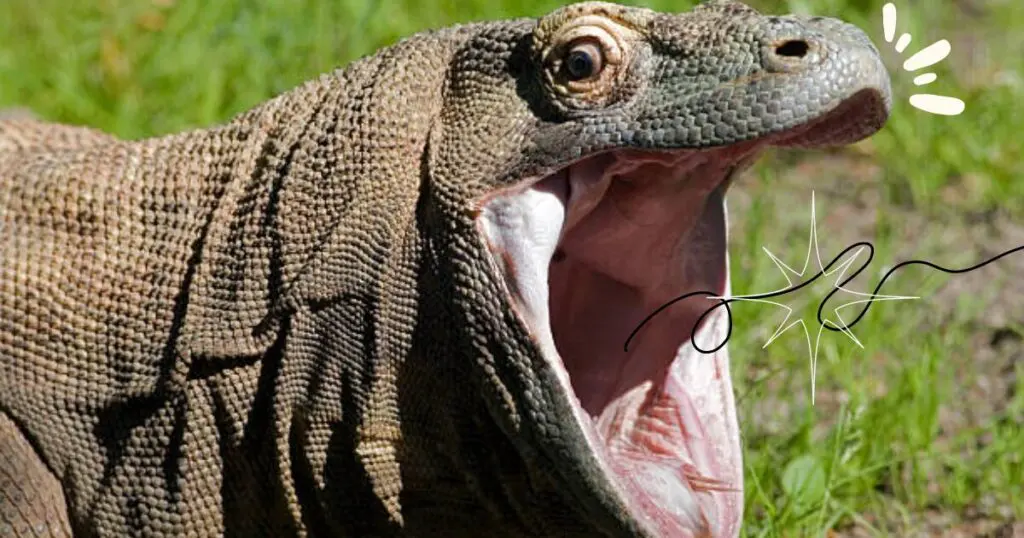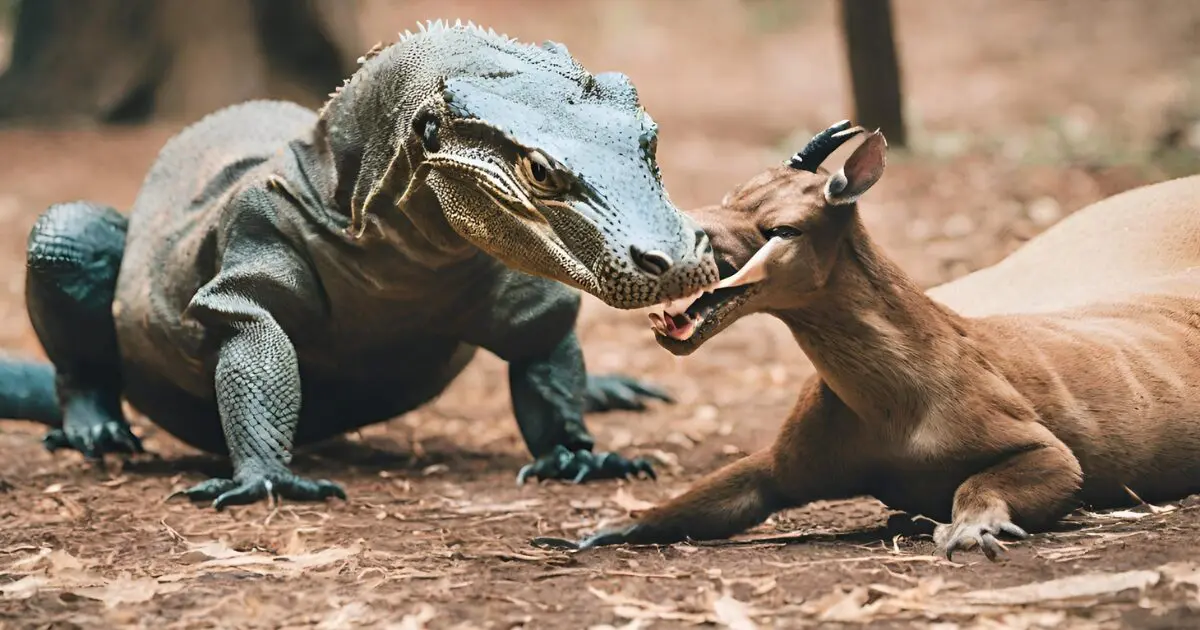At first glance, you may not understand the strength of the Komodo dragon’s teeth. One reason is that you will be looking at them from a distance, and the other is that their teeth are usually hidden. So, how strong are Komodo dragons teeth?
Komodo dragon teeth are strong in a slicing way, not crushing. They have teeth shaped like serrated daggers. These sharp, curved blades are perfect for ripping flesh. However, they lack the bone-crushing power that many other predators have.
Teeth play a crucial role in hunting and their survival in the wild. I will try to show you what their teeth are like and how powerful they are in this article.
Key Points of the Article:
- Komodo dragons have more teeth than humans, more than 50.
- Their teeth are strong but bites are not strong to crush bones
- They use their teeth to tear flesh and inject venom
- Komodo dragons teeth are polyphyodont, and keep growing back.
What Do Komodo Dragon Teeth Look Like?

If you ask me, I would say full-size Komodo dragons teeth are as terrifying as a steak knife fused with a shark tooth. That’s what a Komodo dragon’s tooth looks like. Each tooth is long and conical, curving backward like a claw.
The most striking feature is the edge. It’s not smooth but serrated – like a miniature saw blade. These serrations are incredibly sharp, designed to not just pierce but tear flesh into shreds.
Unlike some other large predators, Komodo dragons do not have blunt-crushing teeth. Therefore, they don’t aim to snap bones with their bite. They use their teeth to create long, ragged wounds and rip away large chunks of meat.
Human Teeth vs Komodo Dragon Teeth: A Comparison

I know it is quite absurd, but this will help you understand the teeth of Komodo dragons better. Have a look at the table below:
| Feature | Human Teeth | Komodo Dragon Teeth |
| Number of Teeth | 32 (adults) | Up to 60 |
| Replacement | Diphyodont (one set of baby teeth replaced by permanent teeth) | Polyphyodont (continuous replacement throughout life) |
| Tooth Shape | Varied – incisors, canines, premolars and molars. | Long, conical, curved backwards with serrated edges |
| Function | Primarily for chewing and processing food | Tearing and shredding flesh, inflicting deep wounds |
| Bite Force | Relatively weak | Weak compared to size |
| Special Features | Enamel (hard protective outer layer) | Serrated edges |
| Gums | Thin and exposed | Thick and cover most of the tooth |
| Diet | Omnivorous (eat both plants and animals) | Carnivorous (eat meat) |
| Evolutionary Advantage | Processing diverse food types | Efficiently tearing and consuming large prey |
Why Can’t You See Komodo Dragons Teeth?

You will find it difficult to notice their teeth, even when Komodos open their mouths. It’s a surprising trick of Komodo dragon anatomy! Their teeth are actually there, but they’re hidden by thick gums. These gums are almost like a leathery sheath that obscures most of the tooth.
This might seem counter-intuitive for such a ferocious predator. Nonetheless, there are a couple of theories regarding these hidden Komodo dragons teeth. One idea is that these thick gums protect the teeth while the Komodo dragon chomps through flesh and bone. To me, it really makes sense.
Another theory suggests the gums help grip prey and prevent them from slipping. So, either way, the thick gums are actually beneficial for these lizards. Whatever the reason, those impressive chompers are there. We may not see, but they are just waiting to unleash their serrated fury on the flesh of their prey.
The Uses of Teeth in Komodo Dragons
You know teeth are important, right? Humans’ teeth make them handsome, help with eating, and all. But for Komodos, the importance of teeth is even more.
1. Weakening Prey
The first important thing I think I have to mention is the use of teeth in hunting. They would not have survived otherwise in the wild. Komodo dragons are venomous, but they need to create a wound to inject the venom into their prey.
The venom prevents blood from clotting and lowers blood pressure. The victim begins to weaken and dies eventually in a few days. This is especially important as Komodo dragons often target large animals.
2. Gripping the Prey
As I said, Komodo dragons lack bone-crushing power. Their serrated teeth work like saw blades, slicing and tearing flesh. The thick gums surrounding the teeth act almost like a vice. It helps them grip struggling prey and prevent escape. Otherwise, they would have lost the prey and stayed unfed.
3. Ripping and Shredding
The serrated edges of their teeth are the real stars of the show. These act like tiny saws, effortlessly ripping and shredding flesh from their prey. This allows the Komodo dragon to take large chunks of meat in a single bite. Wondering what do Komodo dragons eat?
4. Harboring Bacteria
The teeth and gums of Komodo dragons harbor beneficial bacteria for these reptiles. Once they tear the flesh of a prey, bacteria get passed through saliva. These bacteria work together with the venom to cause infection and cause health illness. It speeds up the process of dying and allows them to scavenge more efficiently.
Interesting Facts about Bearded Dragons Teeth
Let’s see a few interesting facts about the teeth of these lizards. You will be shocked for sure.
- Komodo dragons are packing some serious chompers! They have between 60 teeth. In other words, they have double the number of teeth than adult humans.
- Komodo dragons are polyphyodont. This means they have a lifetime supply of chompers! New teeth develop behind existing ones and slowly push them out as they wear down or break.
- These big reptiles skip brushing! Their diet and constantly-replaced teeth keep them clean.
- Recent research suggests Komodo dragon teeth may play a role in delivering venom. Their serrated teeth may help channel venom from glands in their lower jaw into wounds.
FAQ
Let’s have a look at other interesting questions below and their answers.
1. How powerful is the bite of a Komodo dragon?
Komodo dragons’ bite force itself is surprisingly weak. They are estimated to be lower than a house cat’s bite! Their lethality comes from serrated teeth and venomous bacteria.
2. Will Komodo dragon teeth tear human skin?
Absolutely. Komodo dragon teeth are serrated like steak knives and designed to rip flesh. They can tear the flesh of humans with quite ease. They can also tear the flesh of other big animals like horses and elephants. A bite would cause serious lacerations.
3. How painful is a Komodo dragon bite?
A Komodo dragon bite would be excruciatingly painful. The serrated teeth inflict deep wounds, and venom likely causes further tissue damage and pain. Additionally, there can be infection caused by the bacteria in their saliva.
4. How long is a tooth’s lifespan in Komodo dragons?
Komodo dragon teeth don’t have a set lifespan! They’re constantly growing new teeth behind the old ones. As the front tooth wears down or breaks, the new one behind it pushes it out.
5. Do humans collect Komodo dragon teeth?
No, humans are not allowed to collect Komodo dragon teeth. These reptiles only live in Indonesia, and the country has strict restrictions. It is not legal to collect, buy, or sell Komodo dragon teeth.
Conclusion
Komodo dragons teeth are not the strongest, but one of the sharpest in the wild. They can pierce through the flesh of almost any animal. They have learned to survive without crushing bones. Moreover, the continuous supply of new teeth allows them to hunt throughout their lives.
